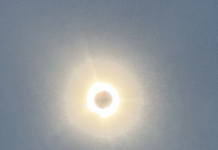Walt Halloran was working as a photographer in Los Angeles when he joined the Army to use his skills on the front lines of World War II. He recalls his “first day at work,” the June 6, 1944,
D-day invasion on Omaha Beach.
“After high school, Chatfield [Minnesota] wasn’t big enough for me—I was going to conquer the world! I went out to California and got a job with the cosmetic company Max Factor as a photographer. After Pearl Harbor, when the Army had to go out and recruit talent, I jogged down to Hollywood Boulevard for an interview.”
“The basic motion-picture camera was the [Bell & Howell] Eyemo. They were very heavy and awkward. The ones we carried in combat had only one lens, and it was fixed-focus. The only adjustment you had was the f-stop for light conditions. One of the big problems loading the Eyemo was that you had to take the whole side of the camera off—where were you going to put it? You have to keep the inside clean; the only thing you could do was to get some soldier close by and say, ‘How about holding something over the top?’”
“The invasion was supposed to be June 5th, and we had a terrible godforsaken night. Going over, I remember that everyone was so seasick, vomiting all over each other and on the decks. There was no place to sit or lie down. It was terrible cold, wet, not much sleep, but Eisenhower made a good call [to delay until June 6th], so the next morning we went in.”
“I was the only cameraman on my boat. My camera was wrapped in plastic. It was wound up tight and ready to go. We had a ‘Musette Bag’ holding 10 cans of film, 100 feet in a can, and then you had your food, a pistol, shelter-half (pup-tent), and a few personal items like a bar of soap, razor, and a toothbrush. There were bags colored Signal Corps orange for film taken by boat and airplane for processing in London.”
“Some of the early film went back with carrier pigeons. They had little saddlebags made of parachute material. Ten frames of film were all we could get in. When they dropped the ramp on the landing craft I went into a deep hole—I thrashed around quite a bit, and one of my birds drowned in the cage that was snapped on my pack. There went half of my communications.”
“Once on the beach, you could not stop! If you did, you were a beautiful target. If you have seen Saving Private Ryan, the opening 10 minutes are about as accurate as Hollywood can come up with. I turned around and faced the sea and I started to film guys coming in on my belly.”
Though he can’t be certain, Halloran believes he may have shot one of the most iconic scenes of the 20th century.
“There is a scene—I know you’ve seen it innumerable times—it shows five troops coming ashore, and the guy on the left is killed. That was the first wave. There was an awful lot of shooting and we never saw our own film until later, so there is no way I can prove it.”
Walt Halloran continued to shoot until after V-E Day ended the war in Europe on May 8, 1945. Today he lives in Rochester.
Click below to watch the actual snippet that Walt believes he filmed.
Click below to watch footage of the D-day invasion. The snippet that Walt believes he filmed occurs at 2:02.








